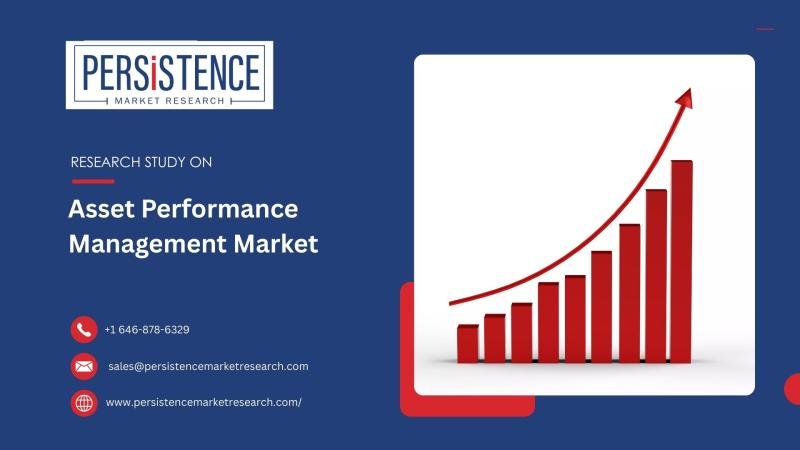The Asset Performance Management (APM) market is anticipated to witness robust growth over the next decade, with projections indicating the market will reach USD 7 billion by 2032. This growth is being fueled by the increasing need for organizations to manage and optimize their physical assets more effectively. As industries around the globe face rising operational costs, the focus is shifting towards technologies that can predict and prevent asset failure before it disrupts operations. With industries such as manufacturing, oil and gas, and energy relying heavily on large and expensive assets, the implementation of asset performance management solutions is crucial for ensuring maximum asset efficiency and reducing operational downtime.
As businesses increasingly adopt Industry 4.0 technologies, including Internet of Things (IoT), big data analytics, and machine learning, APM systems are becoming more integrated, intelligent, and capable of providing real-time monitoring and predictive maintenance capabilities. These technologies enable organizations to proactively address equipment issues, improve asset longevity, and enhance overall productivity. Consequently, the APM market is expected to expand at a significant compound annual growth rate (CAGR) over the next several years, with North America leading in adoption and innovation. These developments reflect a growing trend of digital transformation across industries, which is reshaping how organizations approach asset management and optimization.
Get a Sample PDF Brochure of the Report (Use Corporate Email ID for a Quick Response): http://www.persistencemarketresearch.com/samples/33037
✅ Key Highlights from the Report
➤ The global APM market is projected to reach USD 7 billion by 2032.
➤ Predictive maintenance is one of the leading segments driving market growth.
➤ Manufacturing and energy sectors represent the largest end-users of APM solutions.
➤ North America is expected to dominate the market, owing to its early adoption of automation technologies.
➤ Cloud-based APM solutions are becoming increasingly popular due to their scalability and cost-effectiveness.
➤ AI and machine learning are transforming the APM landscape by enhancing predictive maintenance capabilities.
✅ Market Segmentation
The Asset Performance Management market is segmented by product type, end-user, and deployment method. Key product types include predictive maintenance, asset condition monitoring, remote monitoring, and work order management. Among these, predictive maintenance holds the largest market share due to its ability to prevent costly asset breakdowns by identifying potential failures before they occur. This solution is highly valued in industries like manufacturing and energy, where unplanned downtime can lead to significant revenue losses and operational inefficiencies.
When looking at end-users, industries such as manufacturing, oil and gas, utilities, and energy are the primary drivers of the APM market. In particular, the energy sector is investing heavily in asset performance management solutions due to the aging infrastructure and the need to meet stringent regulatory standards. Furthermore, as energy companies focus on improving asset reliability and reducing operational costs, APM solutions are seen as a critical tool in maintaining the longevity of power plants, wind turbines, and other critical assets. Similarly, the manufacturing sector is increasingly adopting APM to enhance operational efficiency and minimize downtime caused by equipment failures.
✅ Regional Insights
The North American market is expected to dominate the APM market due to its early adoption of advanced technologies such as IoT, artificial intelligence (AI), and cloud computing. Countries like the United States and Canada are home to some of the world’s largest manufacturers, oil and gas companies, and utilities, all of which are heavily investing in APM solutions to improve asset reliability, efficiency, and compliance. Moreover, the region’s strong focus on regulatory compliance, particularly in industries like energy and utilities, is pushing the demand for more sophisticated asset management solutions.
Meanwhile, the Asia-Pacific (APAC) region is forecast to experience the fastest growth in the APM market, driven by rapid industrialization in countries like China, India, and Japan. The growth of the manufacturing and energy sectors in APAC is expected to fuel demand for more efficient asset management solutions. Additionally, government initiatives and a focus on infrastructure development are encouraging businesses in these countries to adopt modern asset management technologies to optimize operations and reduce costs.
✅ Market Drivers
Several key factors are driving the growth of the Asset Performance Management market. One of the most significant drivers is the growing need for predictive maintenance across asset-heavy industries. By identifying potential issues before they lead to equipment failure, predictive maintenance allows organizations to avoid costly unplanned downtime and extend the lifecycle of assets. This capability is especially important in industries like oil and gas, manufacturing, and energy, where asset downtime can result in significant financial losses and regulatory penalties.
Another crucial driver is the adoption of Industry 4.0 technologies, such as IoT and big data analytics. These technologies enable businesses to collect real-time data from assets, providing insights into their performance and health. With the ability to monitor assets in real time and analyze large sets of operational data, organizations can make more informed decisions, improve asset reliability, and optimize maintenance schedules. The integration of AI and machine learning into APM solutions further enhances their effectiveness, enabling predictive capabilities and reducing the risk of unforeseen breakdowns.
✅ Market Restraints
Despite its significant growth potential, the Asset Performance Management market faces several challenges. One of the main restraints is the high initial costs associated with implementing APM systems. Organizations, particularly small and medium-sized enterprises (SMEs), may face difficulties in justifying the investment required for deploying advanced APM technologies, such as IoT sensors, AI, and machine learning solutions. These technologies often require significant upfront investment in hardware, software, and training, which can be a barrier to adoption.
Additionally, the integration challenges associated with APM solutions are a key obstacle. Many organizations already have existing enterprise systems in place, and integrating new APM tools can be complex and time-consuming. The lack of interoperability between legacy systems and newer APM solutions can result in inefficiencies and delays during the implementation process. Furthermore, the complexity of the systems might require specialized personnel to manage them, which can increase operational costs and reduce the scalability of the solution for smaller businesses.
✅ Market Opportunities
The Asset Performance Management market presents numerous opportunities, particularly through the adoption of cloud-based APM solutions. Cloud technologies offer cost-effective, scalable, and flexible alternatives to traditional on-premises solutions. Cloud-based platforms are particularly beneficial for SMEs, as they allow businesses to access sophisticated asset management tools without the need for significant upfront capital investment. As cloud technology becomes more advanced, it opens up new opportunities for businesses to deploy and manage APM solutions with minimal IT infrastructure.
Another opportunity lies in the growing interest in AI-powered predictive maintenance. The increasing use of AI and machine learning is transforming the way organizations manage their assets. AI algorithms can predict equipment failures with high accuracy, allowing businesses to make data-driven decisions about when to perform maintenance. By reducing the likelihood of unexpected asset failures, organizations can achieve cost savings, increase operational efficiency, and optimize their asset management strategies. This presents a significant opportunity for APM vendors to develop more sophisticated and intelligent solutions.
✅ Reasons to Buy the Report
✔️ Gain an understanding of the market size, growth trends, and forecast from 2024 to 2032.
✔️ Discover key drivers and challenges influencing the APM market, and how businesses can address them.
✔️ Learn about the leading regions, segments, and industry players within the APM market.
✔️ Identify new opportunities in cloud-based and AI-powered APM solutions.
✔️ Access market forecasts, insights, and strategic recommendations for investment.
✅ Company Insights
The Asset Performance Management market features a wide range of key players offering innovative solutions. Some of the prominent companies operating in the APM market include:
✦ General Electric (GE)
✦ Schneider Electric
✦ Siemens AG
✦ IBM Corporation
✦ Emerson Electric Co.
✅ Recent Developments
■ Siemens AG has introduced an integrated AI-powered APM solution that helps industries reduce downtime by predicting potential asset failures with high accuracy.
■ General Electric (GE) has expanded its cloud-based APM platform, offering advanced data analytics and real-time monitoring features to enhance asset management in the energy sector.
The Asset Performance Management market is set for impressive growth as organizations recognize the value of optimizing their assets to drive efficiency, reduce costs, and maintain a competitive edge. As industries continue to evolve and adopt digital technologies, the demand for advanced APM solutions will likely intensify, further solidifying the market’s position in the global economy.
Contact Us:
Persistence Market Research
G04 Golden Mile House, Clayponds Lane
Brentford, London, TW8 0GU UK
USA Phone: +1 646-878-6329
UK Phone: +44 203-837-5656
Email: sales@persistencemarketresearch.com
Web: https://www.persistencemarketresearch.com
About Persistence Market Research:
At Persistence Market Research, we specialize in creating research studies that serve as strategic tools for driving business growth. Established as a proprietary firm in 2012, we have evolved into a registered company in England and Wales in 2023 under the name Persistence Research & Consultancy Services Ltd. With a solid foundation, we have completed over 3600 custom and syndicate market research projects, and delivered more than 2700 projects for other leading market research companies’ clients.
Our approach combines traditional market research methods with modern tools to offer comprehensive research solutions. With a decade of experience, we pride ourselves on deriving actionable insights from data to help businesses stay ahead of the competition. Our client base spans multinational corporations, leading consulting firms, investment funds, and government departments. A significant portion of our sales comes from repeat clients, a testament to the value and trust we’ve built over the years.
This release was published on openPR.


















